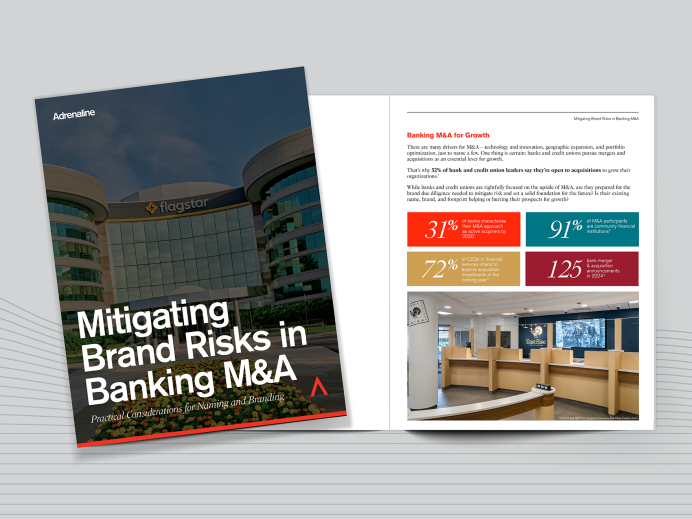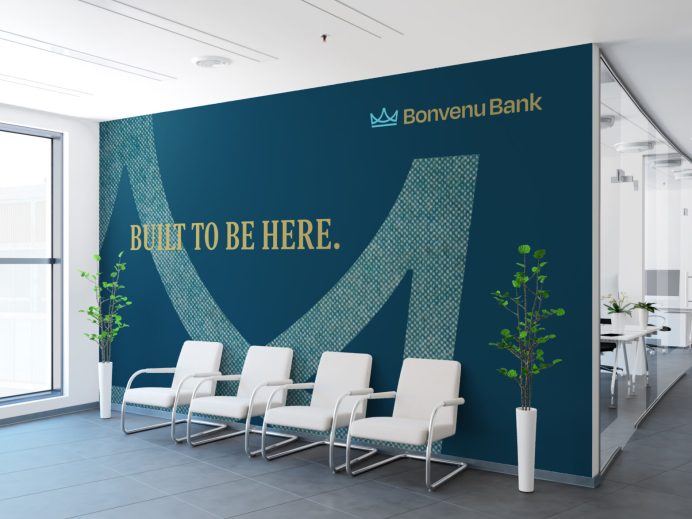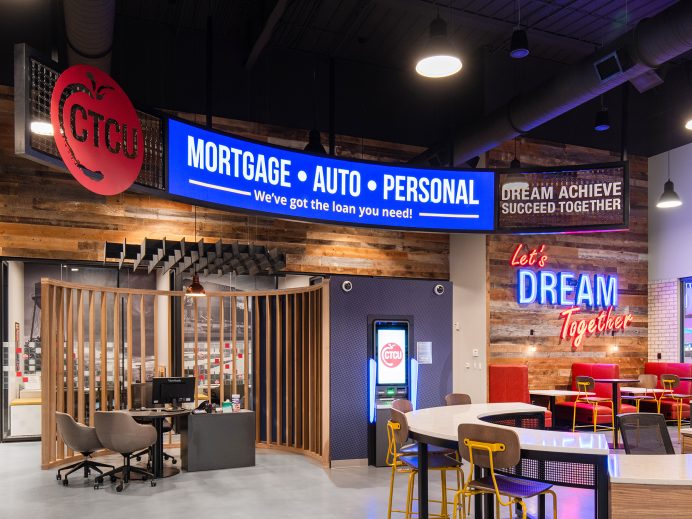A conversation with Adrenaline’s Chief Executive Officer Sean Keathley about how financial institutions are well-positioned in the face of any challenges to come
Recent coverage on Believe in Banking and Adrenaline News paints a portrait of responsiveness and resilience in the financial services sector following some recent high-profile bank failures. Consumer trust in their bank has remained steady throughout current challenges and the industry is fortified by banking deals that strengthen the system as a whole. “That level of trust in people’s primary financial institutions has so far blunted any wider impact to the larger banking industry,” according to Believe in Banking’s reporting and analysis. “That’s because most people perceived the banks [that failed] as different from their own institutions.” They’re also seeing an industry take proactive steps to prepare for the future, whatever that future brings.
Now that the dust has started to settle, we sat down with Adrenaline’s resident expert on the banking industry and its leaders – Chief Executive Officer Sean Keathley – to get his take on how banks and credit unions are positioned right now and some banking best practices he saw bubble to the top.
By now, most people have heard about the challenges in banking with some key institutional failures. But the industry has come out on the other side of these short-term challenges in some ways stronger than before. Can you give us a sense of where the industry is currently?
It’s interesting, because the banks that set this off have been described as “niche” banks and that really is the case. One served primarily venture capital and technology companies and others were in the cryptocurrency space. The reality is that these banks were not like the majority of institutions in the industry – big or small – and they surely didn’t operate like a more typical bank with diversity, transparency and balance. I think the thing the banking industry didn’t want to see was panic, because this really wasn’t a widespread issue. Given the speed of social media, it’s really important to get out in front of these situations to assure the public that this is not going to happen at their regional or community bank, and ensure Twitter didn’t make it a bigger problem than it should be. It’s not 2008, again. This is not systemic. And banking leaders, much to their credit, felt a duty to inform and stepped up in some really notable ways.
There were some particular standouts that we watched and even spotlighted recently as best practices for restoring consumer trust in banking. You know a few of them really well. Tell us more.
People like Brad Tidwell, VeraBank’s President and CEO, who probably partially for his bank and partially for the sector, was just very vocal. We also saw Jill Castillo, CEO of Citizens Bank of Edmond in Oklahoma, instinctively and immediately take to social media to get the word out. Frost Bank was on CNBC within an hour and talked about their balance sheet as being a fortress. They are so well stabilized and they bring that liquidity into tough times like they have for the past 150 years. I think these leaders wanted people to understand that this wasn’t something fundamentally wrong with banking, but really more about these individual institutions. Even more, the way they responded gives me faith that even if there are rough patches in the future, the vast majority of banks stand ready. We’ll find out more in the days to come about what ultimately led to these particular failures, but for these community and regional banks, communicating to their customers came first.
You’ve been having conversations with people throughout the past couple of weeks, bank CEOs and leaders. Can you tell us what’s on their minds as we emerge from this moment?
Traditional banks are not at risk from what happened here. But there are market pressures that are real. So, a rising rate environment, inflation that’s at a 40-year high and a cost of goods that is still quite high. We’re also hearing their credit is tightening. Even though we’re not economists, there’s really no denying those pressures, and they may lead us into a tougher economy ahead. So, yes, there are headwinds. That being said, traditional banks are very diverse, and they’re already taking actions to deal with these economic challenges. But even more, these community institutions have their local neighborhoods at their core. They want to do everything they can to be sure people’s money is safe and that their communities thrive. That’s what drives them. They’re actually getting more customers right now, as people prioritize safe institutions that do the right thing.
Talk about the strength of the banking industry to face any challenges. How are they positioned to weather whatever comes their way?
As a result of 2008, there are requirements of large banks to prevent them from taking risky actions that could bring down the banking system. In addition, we’re seeing a focus on solid banking fundamentals from institutions of all sizes. All you really need is strength in the tough environment. We know in these economic cycles that good times don’t last forever and bad times don’t either. With COVID, we’re still moving our way through a kind of hundred year situation, economically and otherwise, and it’s just working itself out. And so as long as your bank is strong – not taking on too much risk, not putting all their eggs in one basket – they’re going to be able to handle the pressure. One area I do think you’re going to begin hearing about is challenges in commercial real estate. I think that’s a big new concern, given the amount of commercial space that’s no longer being used. Even still, I go back to being diversified. Strong, diverse banks will be able to march forward.
What do you think are the lessons learned? What can we take away from this moment?
One thing I think will happen is that the idea of uninsured deposits is going be a thing of the past. The FDIC coverage is currently at $250,000 and there were some other banks that weren’t crypto heavy banks or niche banks that had probably too large a percentage of their deposits not federally insured. So, there’s already banks introducing new products to cover larger amounts, while customers can leave their accounts with their current institution. That’s some of the industry work that’s happening, and it’s a practical solution to a real problem. If you want to make people feel better about your bank, it’s more than getting on CNN and saying, “We’re different.” It’s saying the totality of your money is insured, there’s no risk to the depositor. Yeah, that will make people feel better.
But beyond banking services, I think about the role of banking and bankers’ roles in this country. I think in my lifetime, you know, there have been hard times for sure. But in my adult lifetime, the banking response to the pandemic, was simply… heroic. You know, I just saw a picture of Hue Townsend, the CEO of Guaranty Bank in west Mississippi this weekend, where he took a food truck to areas ravaged by tornadoes. And there he is with his team making meals for people who just lost everything. For me, that’s the kind of picture I have in my head about what it means to be a banker in 2023.
To learn more about best practices in banking, be sure to see Adrenaline’s Insights channel for financial industry thought leadership. Be sure to also stay tuned in to Believe in Banking as it highlights industry news and views for banking leaders. To speak with one of Adrenaline’s experts on strategies like proactive communications programs for banks that build consumer trust and loyalty, contact us at info@adrenalinex.com.
Adrenaline is an end-to-end brand experience company serving the financial industry. We move brands and businesses ahead by delivering on every aspect of their experience across digital and physical channels, from strategy through implementation. Our multi-disciplinary team works with leadership to advise on purpose, position, culture, and retail growth strategies. We create brands people love and engage audiences from employees to customers with story-led design and insights-driven marketing; and we design and build transformative brand experiences across branch networks, leading the construction and implementation of physical spaces that drive business advantage and make the brand experience real.




